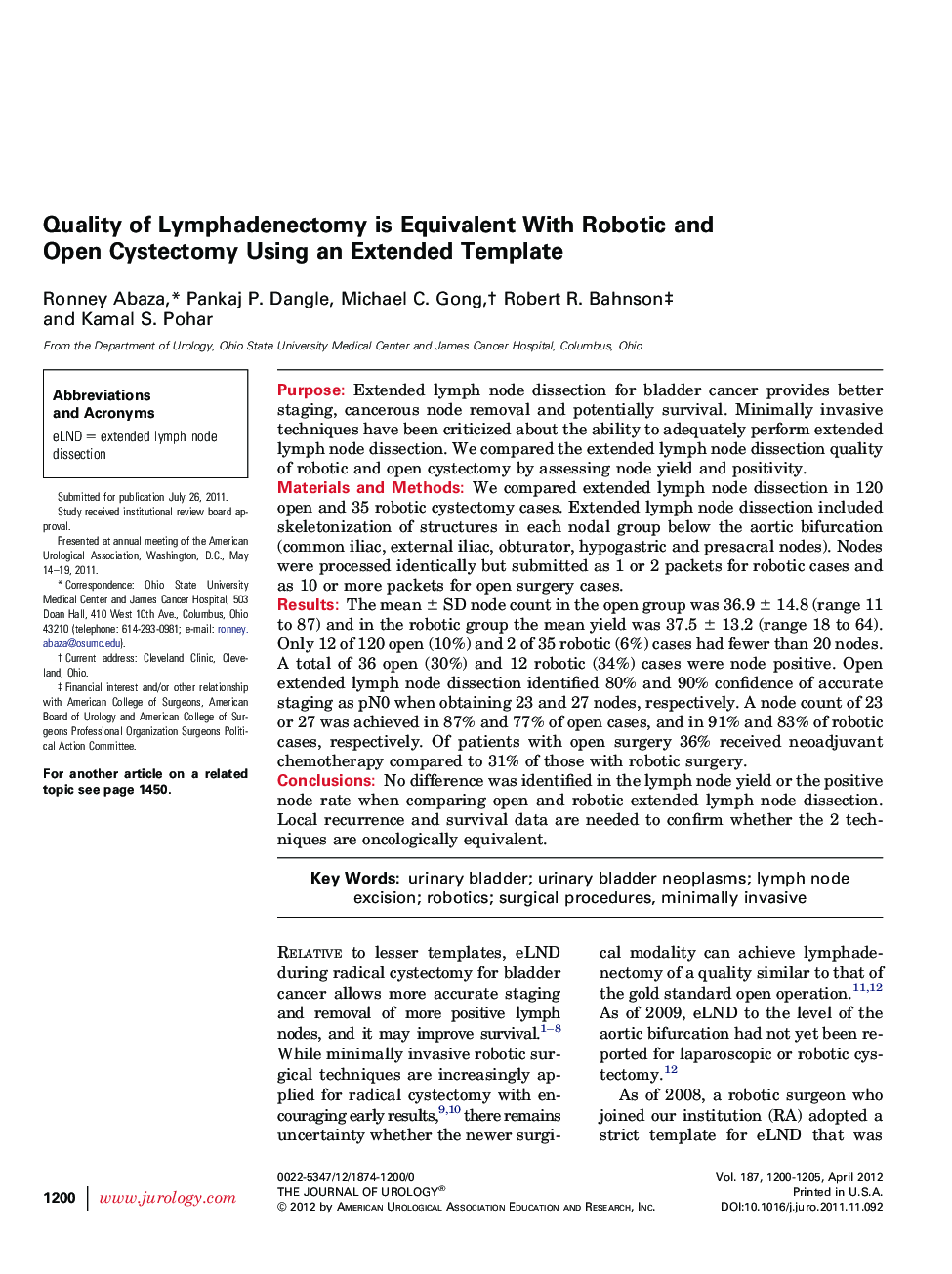| Article ID | Journal | Published Year | Pages | File Type |
|---|---|---|---|---|
| 3866999 | The Journal of Urology | 2012 | 6 Pages |
PurposeExtended lymph node dissection for bladder cancer provides better staging, cancerous node removal and potentially survival. Minimally invasive techniques have been criticized about the ability to adequately perform extended lymph node dissection. We compared the extended lymph node dissection quality of robotic and open cystectomy by assessing node yield and positivity.Materials and MethodsWe compared extended lymph node dissection in 120 open and 35 robotic cystectomy cases. Extended lymph node dissection included skeletonization of structures in each nodal group below the aortic bifurcation (common iliac, external iliac, obturator, hypogastric and presacral nodes). Nodes were processed identically but submitted as 1 or 2 packets for robotic cases and as 10 or more packets for open surgery cases.ResultsThe mean ± SD node count in the open group was 36.9 ± 14.8 (range 11 to 87) and in the robotic group the mean yield was 37.5 ± 13.2 (range 18 to 64). Only 12 of 120 open (10%) and 2 of 35 robotic (6%) cases had fewer than 20 nodes. A total of 36 open (30%) and 12 robotic (34%) cases were node positive. Open extended lymph node dissection identified 80% and 90% confidence of accurate staging as pN0 when obtaining 23 and 27 nodes, respectively. A node count of 23 or 27 was achieved in 87% and 77% of open cases, and in 91% and 83% of robotic cases, respectively. Of patients with open surgery 36% received neoadjuvant chemotherapy compared to 31% of those with robotic surgery.ConclusionsNo difference was identified in the lymph node yield or the positive node rate when comparing open and robotic extended lymph node dissection. Local recurrence and survival data are needed to confirm whether the 2 techniques are oncologically equivalent.
